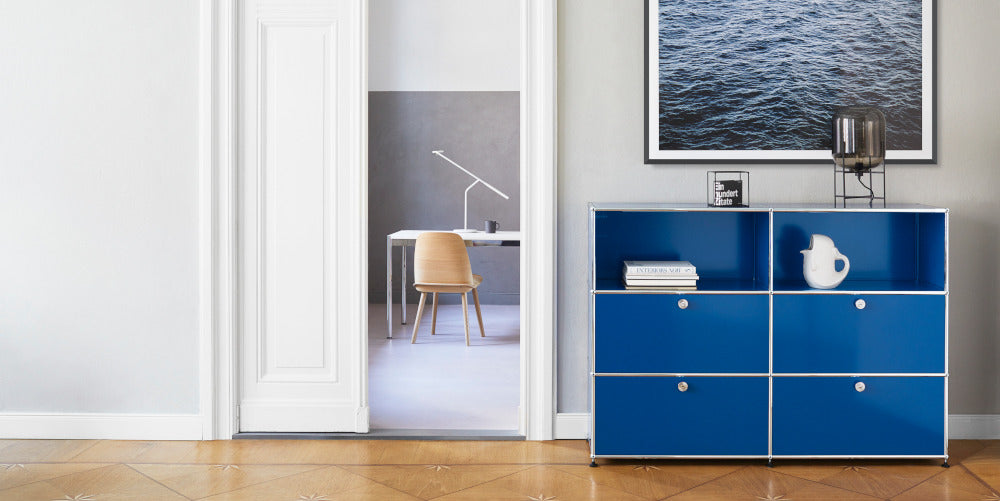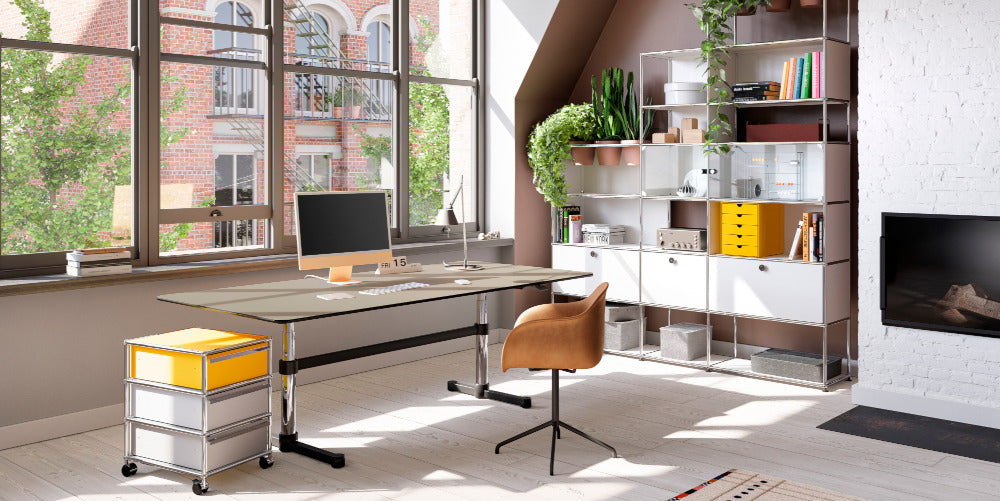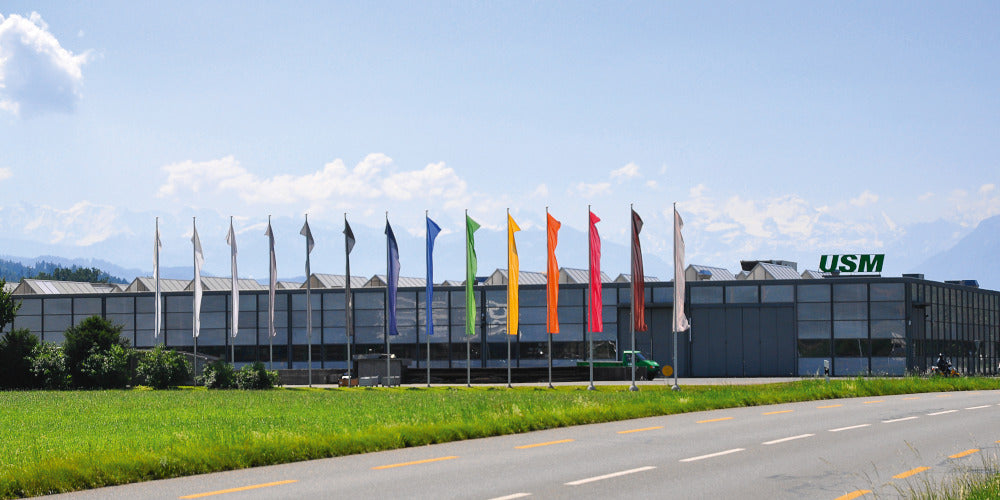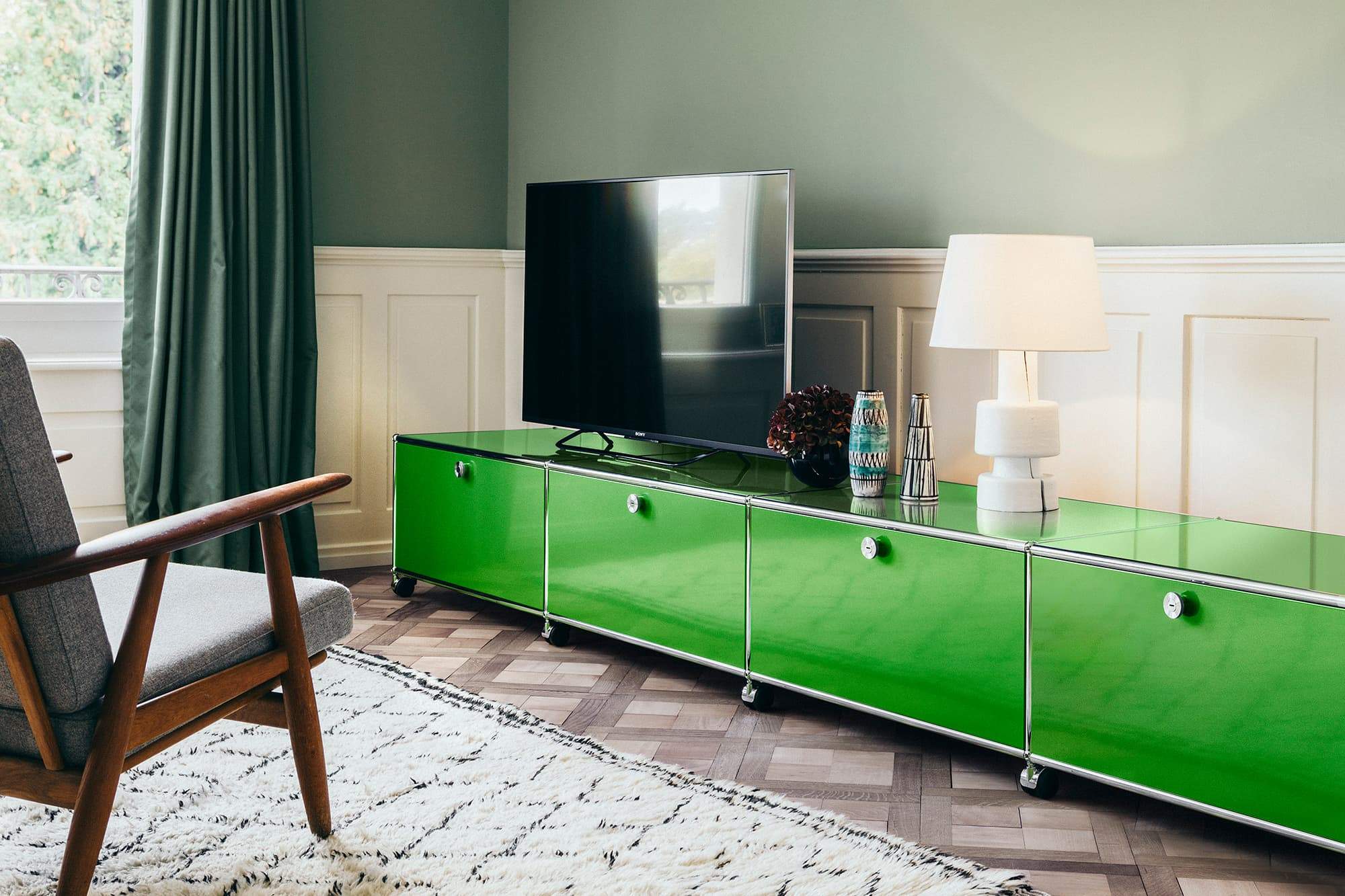Medellín, Colombia
A home of many worlds
In the misty hills of Alto de Las Palmas near Medellín, Colombia, a striking black structure rises from the landscape. At first glance, it appears enigmatic – almost austere. But step inside, and the house reveals itself as a warm, poetic space where nature, culture, and design converge. It’s a home that breathes, built not just to shelter a family, but to express who they are.
The house is composed of distinct modules – each slightly rotated in relation to one another to create both privacy and connection. One for each family member and a central module for shared living, linked by glass corridors and open sightlines, allowing the home to feel unified while supporting different rhythms of life.
We sat down with owner, Serge Kruppa, to learn the fascinating stories behind this architectural masterpiece and the wonderful family home that the nomadic tech executive and his wife, graphic designer Luisa Alzate, created.
Serge, what was the very first decision you made about the house that set the tone for everything else?
Most people don’t have the opportunity to design and build a house by themselves in their lifetimes. We wanted to give this house our best and strive to stretch the boundaries of what is achievable architecturally. Most importantly, we wanted a house that was the embodiment of who we are as a family, something uniquely ours. Many design decisions fell into place naturally from this. We all love nature, and we wanted the house to be a part of the natural landscape it will be built upon, not separate from it - to quote Frank Lloyd Wright. The building had to flow naturally down the slope of the land and be a sort of transparent shell to blend our interior with the greenery surrounding us.
Were there any design elements you initially resisted but grew to love?
Reading the house plans, we did not truly foresee its actual scale. What looks restrained - on paper can turn out to be quite imposing when materialised. We love the cathedral ceilings of the house: they are the antithesis of city life where we live claustrophobically in small, square, apartments. The geometry of the house continuously surprises us - it is forever interesting and enchanting.
How did your travels and exposure to different cultures influence the design?
Swiss, Japanese and Colombian cultures had profound influences on our design choices. I was born in Geneva, Switzerland, and grew up with a foot on skis in the Alps. The chalet is for me the embodiment of natural warmth nestled in the mountains. Wood is used generously throughout those homes. Its patina evolves with the years, turning into rich dark or grey colours. Around the same time, we acquired the lot where we wanted to build the house, we travelled to Japan for the trip of a lifetime. I fell in love with the minimalism and peaceful Wabi Sabi aspect of Japanese buildings. How a crack in a polished concrete floor adds rather than subtract from its beauty. The culture of both countries is rooted in conscious materiality, less worried about flaunting golds and crystals than creating a feeling of tranquil happiness. Our interior design mixed the Swiss and Japanese styles with the joyous energy of Colombian culture. USM Haller shelves display pieces of ceramic art from local craftspeople, and contrast with the infinite hues of a hand-woven rug.
“My great grandfather painted the large oil painting of the Surrey countryside in the early 1900s. This artwork has been in my family for four generations and used to hang in my grandparents’ house in Budapest.”
“We own a sizable collection of over 1000 books, some of them well over one hundred years old. The social module was designed to host that collection and a dedicated library was built, which is accessed by a suspended white metal bridge that also helps break the formidable height of the building.“
How has the home evolved since you first moved in - have you made any changes or additions?
A home is a living thing, forever evolving. The house plants have proliferated marvellously – they thrive both within the building envelope and outside in the garden. The amount of vital energy in the Colombian tropical soil and climate is astounding for any European. After a mere five years since planting, the garden is unrecognizable, having turned into a lush garden of Eden. Over time we have added artworks to the house, such as a picture of the Matterhorn by Swiss photographer Thomas Crauwels, several potteries created by my wife who’s a ceramic artist and so on.
How do guests typically react when they visit for the first time?
My wife is quite involved in the arts and fashion scene in Medellin and her friends who come to visit invariably love the warmth and happiness of the house. The central module is one large social space to eat, drink, and chat around a fire burning in the stove. The acoustics are spectacular, and music sounds fantastic there. Everything conjures to create a friendly atmosphere, like a Swiss chalet at Christmas. From afar, the house is quite mysterious, like a black monolith. Colombian people living in the neighbourhood have conflicting feelings about the house – they are intrigued by it - we had random people taking photos outside or even flying drones above it. In the end, it’s an unconventional design that elicits strong reactions - you either love it or hate it. You have to visit in person to really “feel” the house, let all its positive energy permeate every pore of your body - love at first sight.
Your home features a mix of vintage and modern pieces - how did you approach furnishing the space?
Our starting point was a number of vintage furniture from my house in Switzerland as well as pieces collected during a life of travel: several antique Persian rugs, a dinner table from Guanajuato in Mexico, even a closet with a large collection of stickers from the 1970s. Some spaces were designed based on the dimensions of those pieces: the dining room fits the dinner table perfectly. Furnishing followed a layered approach: first fit our vintage pieces, second provide functional storage that fits the design language of the house, third add pieces with high design flair and decorative value. We did not use any interior designer nor mandate any specific style. We simply wanted to love every single piece of furniture or art that made its way into our home. My wife was the heart of this process, conferring some much-needed Colombian vibrancy to the interior design.
How did you discover USM, what attracted you to USM, and how do you feel it complements your home?
I was born and raised in Switzerland, so it was always my aspiration to own some USM Haller pieces. Like Swiss watches, they embody practical perfection that will last forever. Another benefit is their modularity, allowing us to order and build precisely to the dimensions of our home and the exact purpose of the furniture. The result is tailor made, and the clean lines fit seamlessly into any modern space. I find the contrast between concrete or wood-clad walls quite striking. For guests who appreciate great design, our USM Haller furniture turns into a conversation topic. Our only fear was to be among the first buyers of the brand in Colombia and potentially facing difficulties assembling the furniture. Thankfully this wasn’t the case, though we had to enlist help from a Swiss/Colombian friend who set up the more complex elements for us.
“Back in 2014 my wife and I spent our vacations in Europe. At Copenhagen airport we were amazed by the display of a cascade of Louis Poulsen PH5 pendant lamps. We couldn’t help but recreate this in our dining room, in miniature of course.”
There are quite a few USM pieces, what made you decide to go with USM in several rooms of the house?
The USM pieces establish a common design baseline that runs through our home. We did not want to overload our senses with a smorgasbord of different furniture styles but rather show restraint and legibility. As such USM is part of the essential melody that underpins our interior design symphony. From a practical standpoint, USM furniture also adapts wonderfully to any space and purpose while remaining extremely easy to maintain and always looking gorgeous.
What’s a small, perhaps unexpected, detail in the house that brings you joy every day?
The playful dance of the light inside the house at different times of the day as the seasons pass, revealing ever surprising, beautiful sights that turn us into amateur architecture photographers - especially if there’s a cat lounging somewhere in the focus of the camera.
If you're considering USM furniture, you can use our online configurator to design your individual piece.
Explore a quick-ship selection of curated USM pieces in our online shop or find
your local sales partner here. You can also visit our USM showroom in London.





